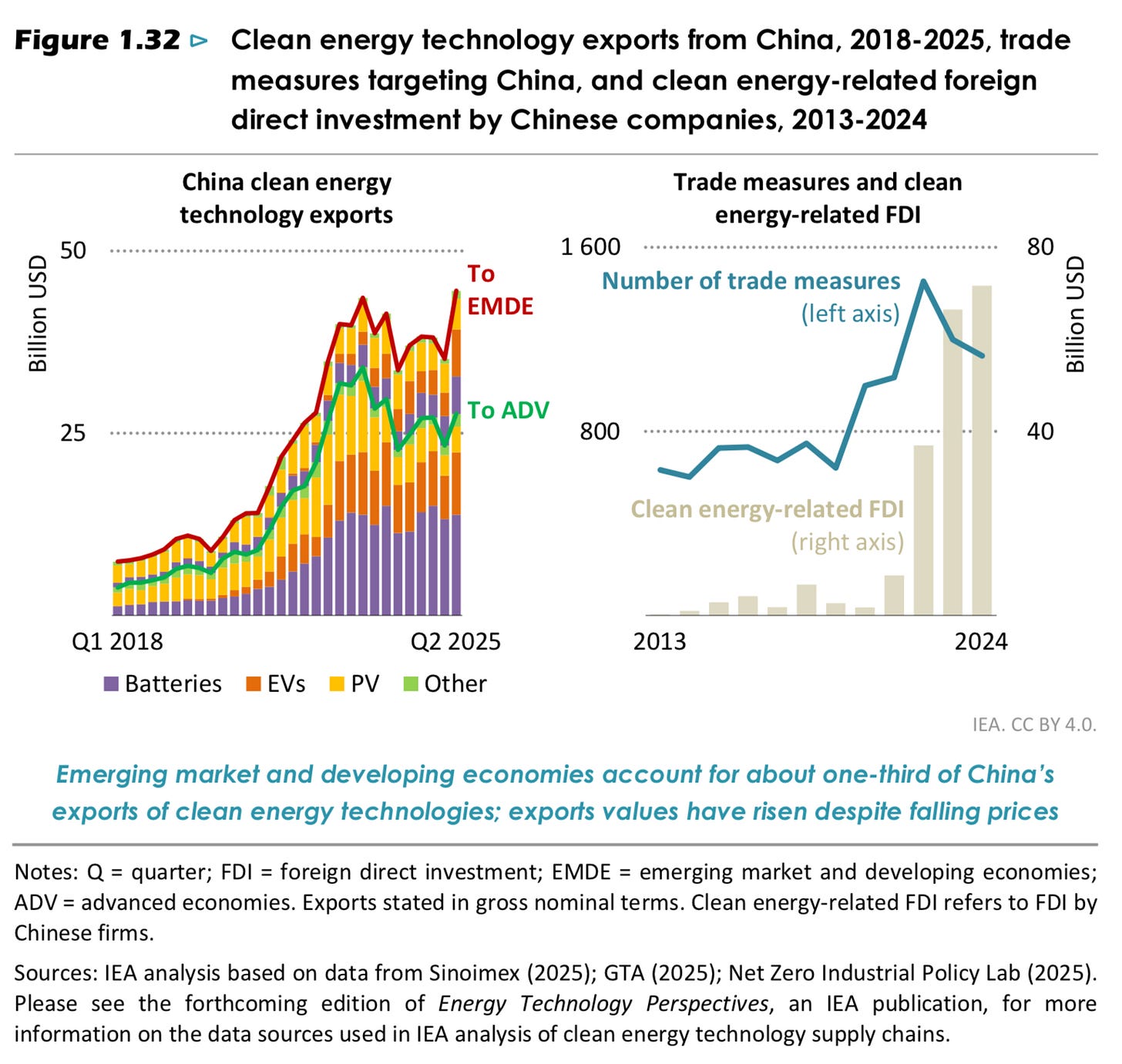A striking observation from the International Energy Agency’s World Energy Outlook 2025 (WEO-2025) is the substantial global spare manufacturing capacity in clean energy technologies. Current production significantly trails installed capacity, with China accounting for the overwhelming majority of this surplus (Figure 1.31).
This overcapacity has triggered a sharp policy response. Competing producing regions, led by advanced economies, have rapidly expanded trade restrictions targeting Chinese exports in recent years (Figure 1.32). One outcome is a decline in the dollar value of clean energy technology exports from all sources to advanced economies.
On its own, this is unsurprising.
What changes the story are two longer-term structural shifts highlighted in the same report.
First, after driving roughly half of global energy demand growth for the past quarter-century (Figure 1.10), China’s contribution is projected to fall to approximately 20 percent from 2024 to 2035, even as overall demand growth decelerates.
Second, leadership is passing to emerging market and developing economies (EMDEs) excluding China, which are now poised to account for the bulk of incremental energy demand. Notably, the countries with the fastest-growing energy consumption also possess the world’s highest solar irradiation levels (Figure 1.12).
Advanced economies, intent on building domestic supply chains and increasingly closing their markets to Chinese products, may be redirecting China’s vast spare manufacturing capacity toward the very regions that (a) will drive future energy demand growth and (b) are ideally suited for the solar technologies China produces at scale and low cost.
The result is a reorientation of global clean energy markets: capacity originally built to serve domestic Chinese and advanced economy needs now appears increasingly destined for the sun-rich, demand-hungry economies of the Global South. Trade barriers intended to curb China’s dominance may inadvertently accelerate its pivot to the parts of the world best positioned to absorb its output.





